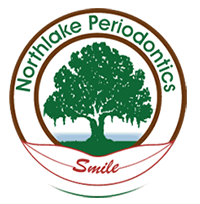GUIDED BONE & TISSUE REGENERATION
Gum disease has traditionally been treated by eliminating the gum pockets by trimming away the infected gum tissue and by recontouring the uneven bone. Although this is still an effective way of treating gum disease, new and more sophisticated procedures are routinely used today. One of these advancements is guided bone regeneration, also referred to as guided tissue regeneration. This procedure is used to stabilize endangered teeth or to prepare the jaw for dental implants.
As periodontal disease progresses, pockets of degenerated bone develop in the jaw. These pockets promote the growth of bacteria and the spread of infection. To address these pockets, Dr. LaSalle may recommend tissue regeneration. During this procedure, the pockets are cleaned thoroughly and a membrane is installed between the soft tissue and the pocket in the bone. These membranes are bio-absorbable. The membrane covers the pocket so that fast-growing soft tissue is blocked, and slower-growing bone can begin to grow, or “regenerate” itself.
The effectiveness of the procedure generally depends on the patient’s willingness to follow a strict postoperative diet and careful oral care. Dr. LaSalle will determine if bone regeneration surgery is right for you.
Gum disease has traditionally been treated by eliminating the gum pockets by trimming away the infected gum tissue and by recontouring the uneven bone. Although this is still an effective way of treating gum disease, new and more sophisticated procedures are routinely used today. One of these advancements is guided bone regeneration, also referred to as guided tissue regeneration. This procedure is used to stabilize endangered teeth or to prepare the jaw for dental implants.
As periodontal disease progresses, pockets of degenerated bone develop in the jaw. These pockets promote the growth of bacteria and the spread of infection. To address these pockets, Dr. LaSalle may recommend tissue regeneration. During this procedure, the pockets are cleaned thoroughly and a membrane is installed between the soft tissue and the pocket in the bone. These membranes are bio-absorbable. The membrane covers the pocket so that fast-growing soft tissue is blocked, and slower-growing bone can begin to grow, or “regenerate” itself.
The effectiveness of the procedure generally depends on the patient’s willingness to follow a strict postoperative diet and careful oral care. Dr. LaSalle will determine if bone regeneration surgery is right for you.
